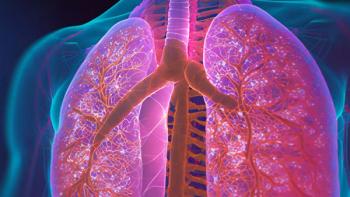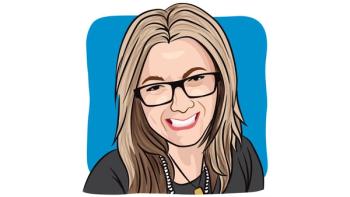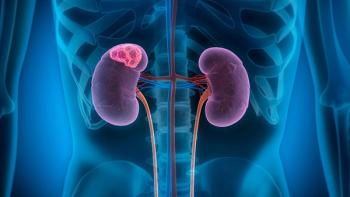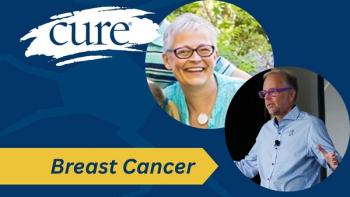
My Health, My Voice: Why Self-Advocacy Is Important
Key Takeaways
- Self-advocacy is crucial in healthcare, ensuring patients' voices are heard and influencing medical outcomes and emotional well-being.
- A negative experience with a physical therapist led to an inaccurate fall risk assessment, highlighting the need for patient vigilance.
I challenged a mistaken fall risk label before my transplant and proved that self-advocacy is crucial to both quality care and emotional well-being.
After I was diagnosed with multiple myeloma, I was fortunate to have many outstanding professional caregivers. That included my oncologist at our local cancer center, the nurses who administered my weekly chemo, and the medical team at a larger hospital, two hours away, where I received my stem cell transplant. They were upbeat and encouraging and clearly explained complicated information about my treatment options.
But I had a negative experience with one caregiver — a physical therapist who assessed my condition prior to the stem cell transplant — that underscored the importance of self-advocacy. Her assessment was one of a few dozen tests required by insurance to ensure I was healthy enough for the expensive, risky procedure. Other tests considered my heart, lungs, kidneys, bone marrow as well as overall physical and cognitive health.
The November day I met with the physical therapist (PT) had been grueling. I’d driven from my home two hours away on icy highways and navigated my way to several different exams across the medical complex. The 5 p.m. PT appointment was last on the list, and I was running late due to delays throughout the day.
I expected the PT meeting to be a simple, check-the-box event. Every doctor I’d met with up to this point described my physical condition as excellent for a sixty-year-old woman. I walked five miles a day, jogged, biked, kayaked, gardened and did yoga and strength training. Doctors typically said that my physical strength would help me recover quickly. I expected to breeze right through the PT meeting.
The PT led me to a tiny conference room crowded with furniture. She had an ambitious agenda and warned that our appointment would take at least a full hour. She opened her laptop and launched what was clearly a structured questionnaire. I described my long list of physical activities, completed several cognitive exams, and balanced on each leg for ten seconds, as she requested. During a fifteen-minute timed walking exercise, I trudged up and down the hall in my clunky winter boots. She said I’d walked 1.2 miles at a nearly five-mile per hour pace, well above the norm.
But, at the end of the appointment, she said I was a fall risk and would be confined to my hospital bed for the full two-week hospitalization. I would have to summon a nurse anytime I needed to go to the bathroom. Her diagnosis confused me, but I was tired and certain I must have misheard her. She was eager to end the appointment, and I was eager to get home. When I examined her notes on my patient portal a few days later, I noticed that she’d cited gait and balance issues and listed “occasional yoga” as the only physical activity I’d reported.
I was stunned. Every other member of my oncology team had stressed the importance of staying active throughout treatment. The prospect of being confined to a hospital bed for two weeks seemed worse than the idea of the stem cell transplant itself.
I speculated about what the PT was thinking. She seemed young; maybe this was her first job. Maybe she was paranoid about liability or distracted because she had to stay late. Or maybe she really did see something concerning. But her discouraging diagnosis was completely at odds with my self-perception and with feedback from other caregivers.
I expressed my rage to my husband. In my darkest moment, I thought, “Fine, if they want me to be weak, I’ll show them just how weak I can be.” I was on the precipice of what psychologists would call learned helplessness. I was perilously close to giving up, to surrendering to what seemed like her inordinate power over my options.
Then I came to my senses. I knew I had to take an active role. I had to self-advocate. I recorded my frustration on the follow-up survey and talked with the PT’s supervisor and with my physician assistant. I was polite but direct about my feelings. They reluctantly retracted her fall risk assessment.
When I had the stem cell transplant a few months later, the nurses promptly identified me as a “fast tracker,” a highly independent patient who needed minimal direction. I did yoga in my room, rode a stationary bike in the workout room, and walked two miles a day in laps. The fall risk assessment was completely unfounded.
I learned an essential lesson about self-advocacy. As patients with cancer, we see so many professionals who make important judgments about our care. Some spend a lot of time with us, others just a few minutes. We must be vigilant and speak up if we don’t agree or aren’t comfortable with a recommendation. Being an active participant not only helps ensure appropriate medical care; it is also vital to our emotional self-care.
For more news on cancer updates, research and education, don’t forget to





